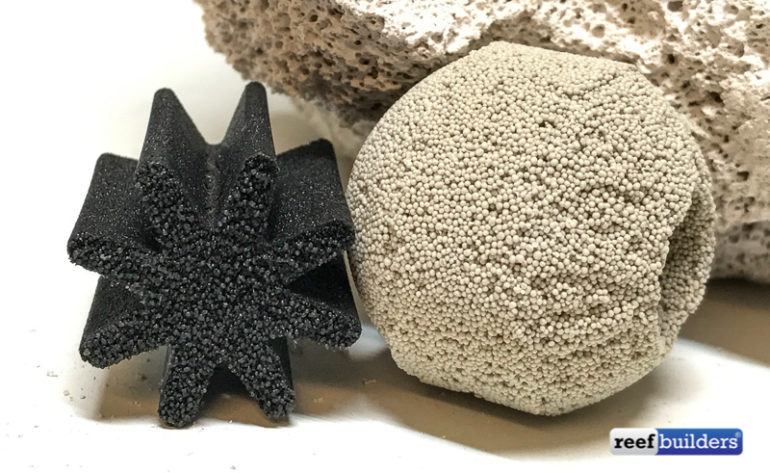The reintroduction of biological filter media has been one of the most significant changes in reefkeeping in the last 10 years. For decades, the Berlin Method taught us to ditch “traditional” aquarium filtration methods and instead rely on the microbial populations on live rock to take care of all our tank’s nitrogen cycling requirements. Conventional biological filter media like ceramics were labeled as “Nitrate factories,” and blamed for many a failing tank. But now live rock has mostly gone, we use way less rock and thinner or no substrates, and ceramics are back in a big way.

What is biological filter media?
For those who skipped their freshwater fishkeeping apprenticeships, fish excrete ammonia, mainly from the gills, it’s very toxic in seawater. Yet, they are not adapted to living in water that contains it. In the aquarium, bacteria develop which converts ammonia first into nitrite, then into nitrate, and we would usually then dilute that via water changes or utilize marine macroalgae to feed on it and use it as fertilizer. Nitrifying bacteria don’t live suspended in the water, however, and they need a surface, and a biofilm to live in. And this is where biological filter media comes in.
To be clear, biofilms will form on every surface which is exposed to the aquarium water, from the glass to your pipework, to your wavemaker, as well of course the surfaces of rockwork and on sand grains. What biological media does, however, is provide a lot of surfaces to colonize in a compact space. We encourage bacteria to colonize it by providing three-dimensional objects (media,) with a high surface area in relation to their mass, and then placing it in an area with both food (ammonia,) and importantly, oxygen, as the primary nitrifiers are aerobic. Tapping into that nitrification is what makes keeping fish in all closed systems possible, be it fresh or saltwater, aquarium, or pond.
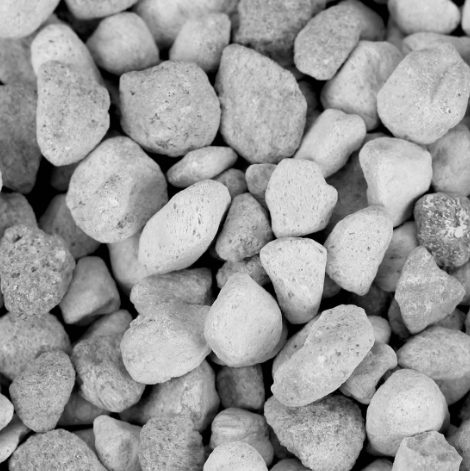
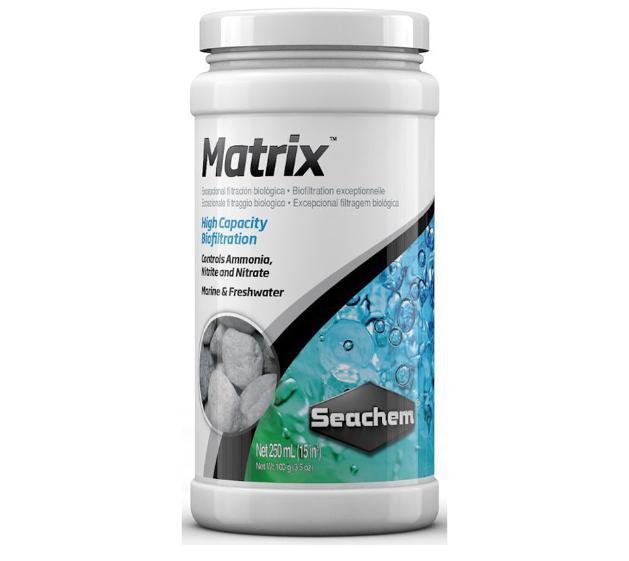
What can I use for biological filter media?
Biological media is available in myriad forms and materials, but generally, we use three main types.
Natural – this can be any naturally porous reef-safe rock that’s been mined and broken down into ½”-1 ½” lumps. Examples include Lava Rock, Coral gravel/rubble, and crushed porous limestone resembling bits of Marco Rock.
Ceramic – this is media made from clay or cement-like material which is then baked to produce a hard, porous material. Examples include ceramic rings, also known as noodles.
Plastic – this is man-made, either molded or extruded shapes with a high surface area. Examples include K1 and Bio Balls.
All will colonize with beneficial bacteria and all are of use for reef aquariums, although we strongly recommend crushing, soaking and ICP testing any unknown filter media if it’s not already a well-known, well-used brand in the reef hobby. It may just leach something.
We use biological media by Seachem, Maxspect, Aquaforest, Siporax, and Brightwell, to give you just five trusted examples.
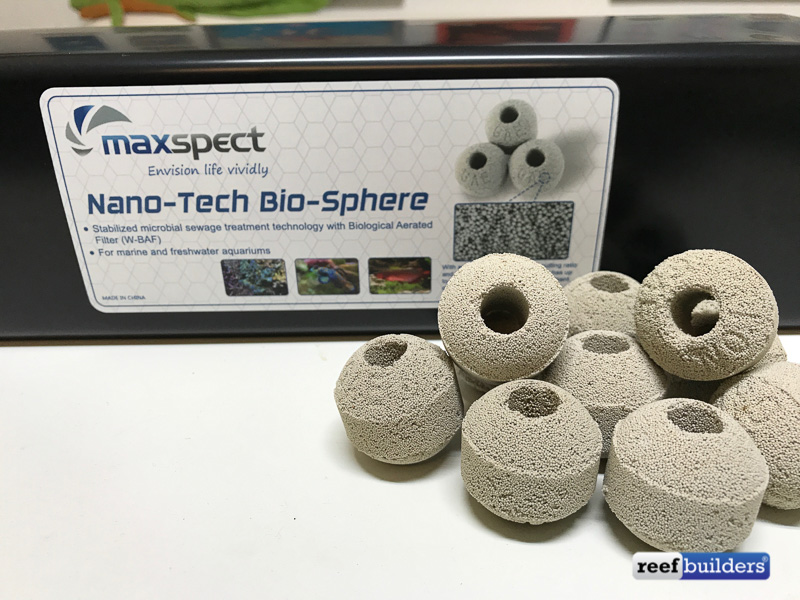
Where to place biological media
Biological media needs oxygen, so although regularly placed inside media bags we recommend it is placed loose or spread out to ensure it is exposed as much as possible to the water. Aerobic biofilms don’t appreciate being covered in gunk, so ensure effective mechanical filtration before hand, and “clean” it in old tank water if necessary.
Biological filter media should be placed in the filter chamber of an AIO or in a sump, but even then some places are better than others. Raise the media up off the bottom and place it in an area of high flow. A dedicated, flow-through media chamber or between two sump baffles is ideal, although egg crate can be used and increasingly, 3D printing can provide some clever and neat solutions to holding media together where its storable in high flow areas yet easy to handle, like in media stands.
Media reactors are the ultimate home for bio media as they concentrate flow and food through the media, but they do need a mechanical pre-filter (or frequent cleaning,) and if the reactor blocks or the pump flow to it is stopped, the aerobic bacteria will quickly die off and foul the chamber.
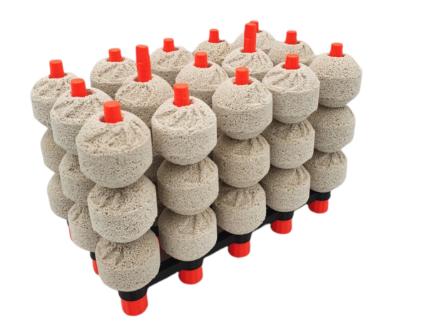
How much biological media should you use?
Contrary to popular belief, more bio media isn’t always better when it comes to straight nitrification. The most effective biofilms need to be thick and robust, but if you only have a few fish and many cubic feet of bio media the biofilm becomes thin and weak, and maturation can actually take longer.
Manufacturers’ recommendations are fine but as a general rule, about a quarter of a gallon of media (1-liter volume,) will suffice for standard stocked reef aquariums up to 100 gallons in volume. Manufacturers will encourage to change out that media periodically but as long as it doesn’t crumble, we’ve used the same media for decades and it shouldn’t need replacement.
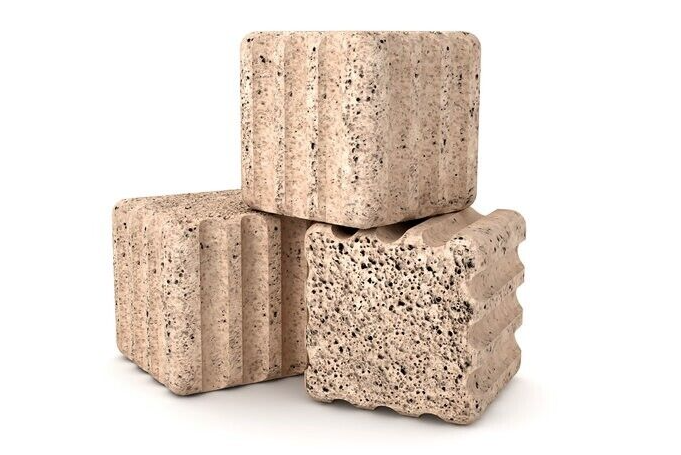
What filter media reduces nitrates?
We, and many other users, have noticed that some of the more high-tech bio media available like Maxspect’s Nano-Tech Biospheres may even complete the cycle and reduce nitrate. This was the original hope for live rock, although that wasn’t always the case. Maybe with better skimming and mechanical filters, it would have been possible.
For a long time, we were also told that for denitrification to occur it must happen in anaerobic zones deep within the rock or sand beds, although de-nitrifiers can also be found in aerobic biofilms – it’s where their food is after all – and the bacteria in bio-pellet reactors or used in probiotic methods are far from buried deep within. Saw a bio block in two and there is often nothing happening deep in the middle, with all the microbial action happening on the outside where the (nitrate,) and food are.
Many other things may also be lowering nitrate at the same time including Zooxanthellae, macroalgae, more efficient skimming, and more efficient prefilters like Roller Filters, so it’s difficult to prove in home aquaria. Specific denitrification media like Brightwell’s XPort NO3 is also available, it can be highly effective, but it’s a big subject for another article.
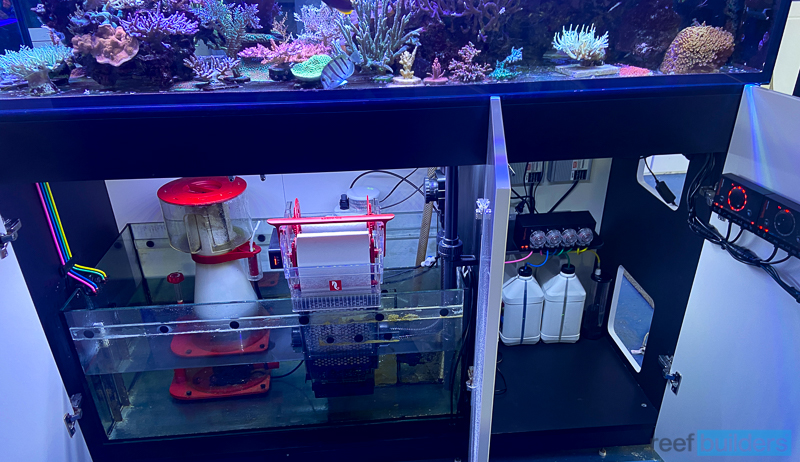
The no-bio-media approach
We ran reef tanks for over twenty years with no specific bio media at all, although we did have rock and sand. In the Reef Builders Studio, no bio media is used in any of the reef tanks, or substrate, although we also understand that the microbiome is on every coral base, every frag plug, and every bit of rock we use, including every other wet surface in the system.
Get salinity and temperature right, stock quite heavily with corals before fish, and those same biofilms and porous surfaces for microbes will be introduced, and again when in the main display, they are exposed to both oxygen and food.
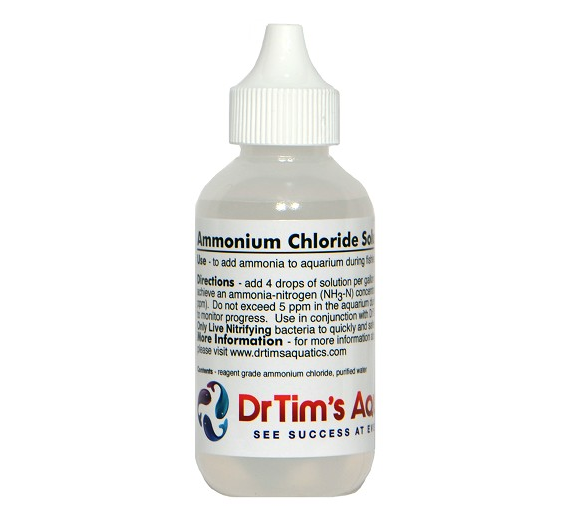
Fishless Cycling
If you cycle first with corals, adding fish afterward shouldn’t cause much of a blip in water quality readings. Ammonia is a rare thing in established reef tanks and nothing as prevalent as it is in freshwater tanks. In new saltwater tanks, however, set up with dry rock, sand, and new media, ammonia, nitrite, and New Tank Syndrome are back in reefing with a vengeance.
Every week in our LFS we see newly set up tanks with cycling problems, and the results with bottled “instant cycling” bacteria cultures are often mixed. No fish should be exposed to ammonia so fishless cycling is the way forward. It also helps prevent panicked new owners and stressed, then – ick prone fish. Either take the Reef Builders route and establish a balanced coral tank first, or fishless cycle using a recommended brand of nitrifying bacteria, and bottled Ammonium Chloride.


